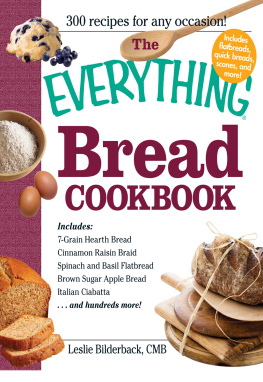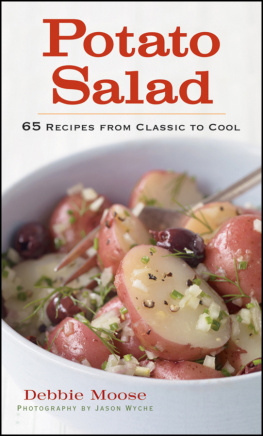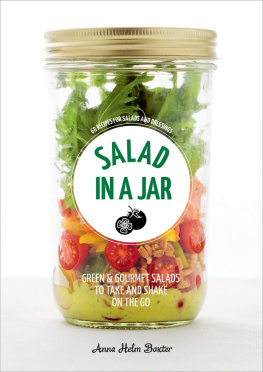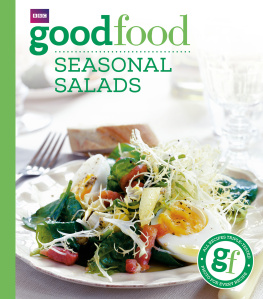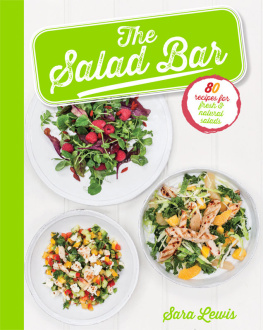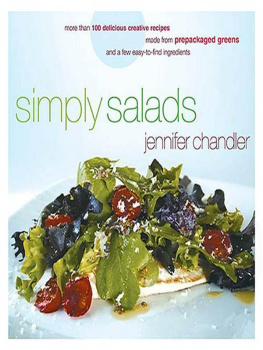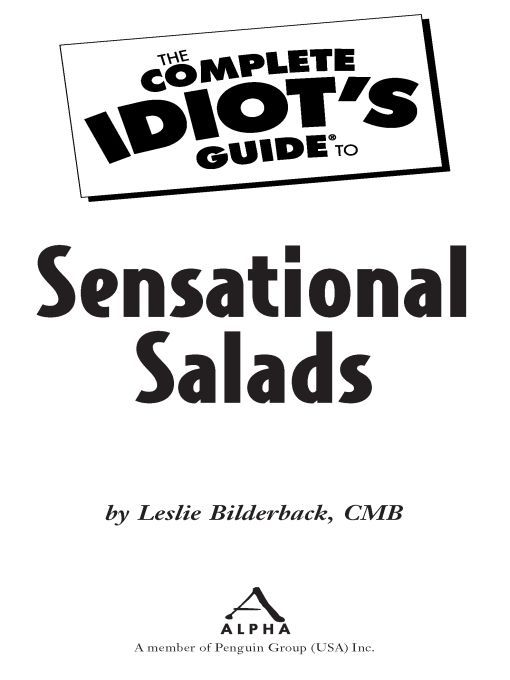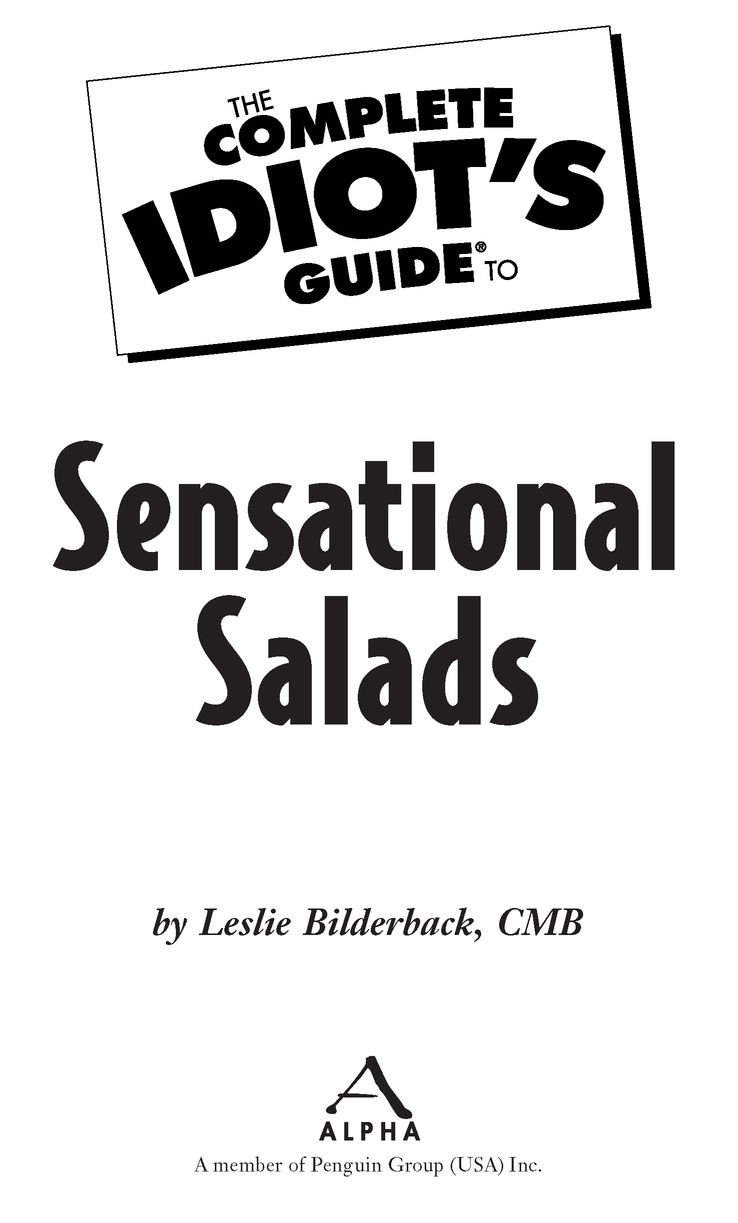Table of Contents
Introduction
Soup or salad? Salad, of course!
Fresh, crunchy, delicious, and good for you, salads are one of the most popular dishes in American cuisine. Every menu has them; every well-balanced meal includes them; and now you can create a treasure trove of delicious, classic, and unique salads for your family and friends.
The idea that fresh greens and vegetables are healthful is not a new one. People as far back as the ancient Egyptians, Romans, and Greeks enjoyed salads of greens and vegetables. They dressed them with oil, vinegar, and salt and called them salata, meaning salted things.
Vegetables were enjoyed in this manner until the late 1800s, when the science of home-making became popular. In that day and age, neater and cleaner meant better and more refined. In such a home, no messy pile of raw leaves would do. Obsessed with hygiene, cooks figured the best way to avoid sickness was to cook the germs out of their veggies (along with flavor and nutrients). To accommodate the loss of flavor, ingredients of all kinds were added, mixed, and molded. Salads were deconstructed, organized, and arrangedand bore little resemblance to the food they were made from.
At the turn of the twentieth century, salad dressings began to appear on the market. New York deli owner Richard Hellman sold his mayonnaise to the public in the 1920s, and Kraft introduced pourable French dressing in 1925. In 1948, Phil Sollomi, owner of the Wishbone restaurant in Kansas City, Missouri, began selling his mothers Spicy Sicilian salad dressing.
Several Midwestern restaurants claim to have invented the salad bar in the 1960s. This development made fresh salads possible in a fast-food setting and many full-service restaurants adopted the trend as a way to keep their customers busy while the real food was being cooked. Today, nearly every restaurant offers at least a small selection of salads, and most provide salads as full-blown entre choices. With a virtually unlimited supply of fresh greens, vegetables, and fruits from around the world, salad-making has risen to new heights in the hierarchy of food.
Granted, most salads are not health food. The healthy myth stems from the use of vegetables. Sure, vegetables are good for you, but many salads are also loaded down with caloric dressing, croutons, fruits, nuts, meats, and cheese. All that can be as dangerous to your waistline as a double cheeseburger. If youre concerned with your youthful figure, eat salads as a part of a well-portioned, well-balanced diet. But the vegetable component is an important one, and it is necessary to note that few Americans get their recommended 3 cups a day. So drowned in dressing or not, the nutrients derived from fresh vegetables are infinitely better for you than popping a daily multivitamin.
When shopping for produce, look for the dark, vibrant colors, which is an indication of the nutrients within. The darker the hue, the more nutrient-packed it is.
And remember that its important to keep variety on your menu. Having the same foods every day limits the amount of nutrients you get. A healthier diet is an ever-changing diet. But getting stuck in a culinary rut is easy to do, and coming up with new recipes can be challenging. Theres no loss for salad inspiration within these pages. Soon youll be wowing your family and friends with tantalizing salads every day of the week. So dust off your salad spinner, head to the market, and chill your plates. Its salad time!
How to Use This Book
This book is dedicated to providing you with a number of delicious, easy-to-prepare, nutrient-rich salad recipes. Whats more, its a font of creative ideas you can use to create your own salad sensations.
In Part 1, Salad Basics, you get to know produce like never before. These chapters discuss how to pick it, store it, and the best methods of preparation. Vegetables, fruits, oils, and vinegars are all covered, as well as some nifty techniques for creating your own flavored oils and vinegars.
Salads traditionally served as side dishes comprise Part 2, Salads on the Side. Here youll find greens salads, potato salads, fruit salads, and even warm saladsall suitable to accompany your favorite meal, whether its filet mignon or PB&J.
Part 3, The Main Event, investigates the salad as an entre. Filled with meat, poultry, seafood, pasta, grains, and beans, these salads are designed to fill you up, physically and nutritionally. Theres even a chapter for salads whose ingredients are taken from some of your favorite main courses, such as tacos, BLTs, fajitas, and Chinese chicken.
Accoutrements
Throughout the book youll find a sprinkling of sidebars to complement the text:
Heads-Up!
These boxes issue warnings for common mistakes and potential disasters.
Lettuce Lingo
Look here for culinary terms you might not know.
Salad Secret
These boxes contain tips and tricks every good cook should know.
Tasty Morsel
These boxes are full of interesting facts you never knew you needed to know.
Acknowledgments
This book is dedicated to Bill, who, once upon a time, made the most romantic dinner ever. He spent all day shopping, washing, and chopping to create our very own salad bar. Love at first bite! Thanks to that salad bar, we now have two more salad lovers, Emma and Claire. Girls, why not try something besides blue cheese?
Special Thanks to the Technical Reviewer
The Complete Idiots Guide to Sensational Salads was reviewed by an expert who double-checked the accuracy of what youll learn here, to help us ensure that this book gives you everything you need to know about turning out terrific salads at home. Special thanks are extended to Lisa Vislocky.
Trademarks
All terms mentioned in this book that are known to be or are suspected of being trademarks or service marks have been appropriately capitalized. Alpha Books and Penguin Group (USA) Inc. cannot attest to the accuracy of this information. Use of a term in this book should not be regarded as affecting the validity of any trademark or service mark.
Part 1
Salad Basics
Is your idea of salad a bowl of lettuce and a bottle of dressing? Do you get nervous in the produce section of your grocery store? Are you aching for more in your salad relationships? If so, youve come to the right place.
Any ingredient that could conceivably be used in a salad is explained in the following two chapters. You learn about the different greens, herbs, vegetables, fruits, and extras that make salads interesting and fun. Then, you learn how to put down the bottle and make your own delicious dressings from scratch. Creamy and thick, tangy and light, and everything in between, these basic recipes cover it all.


